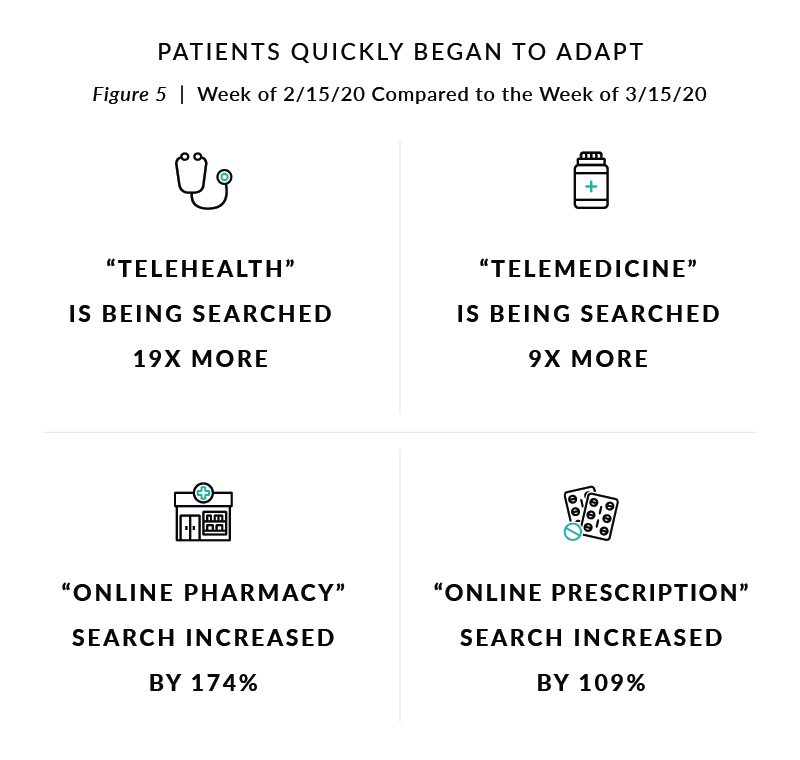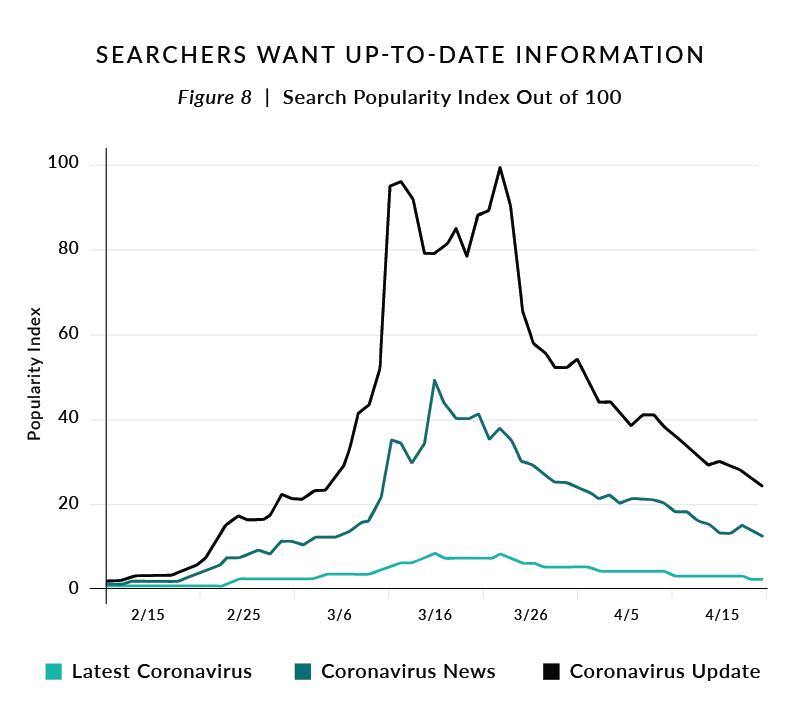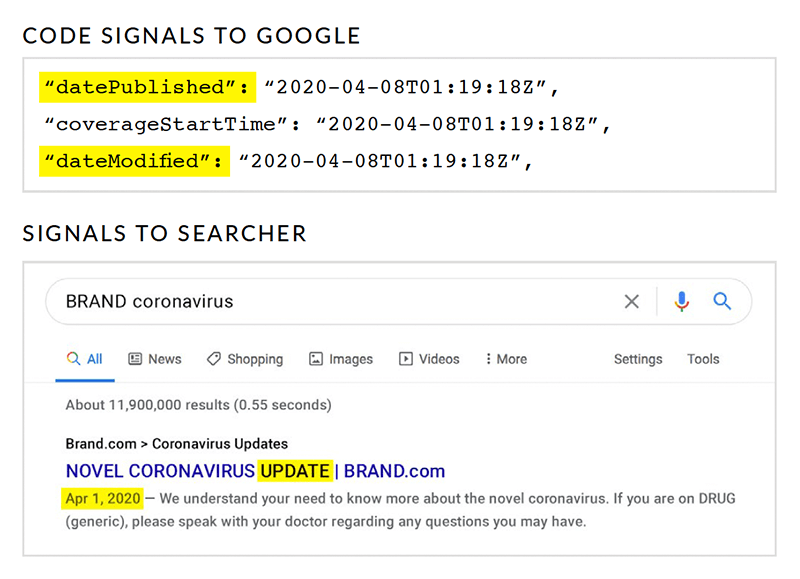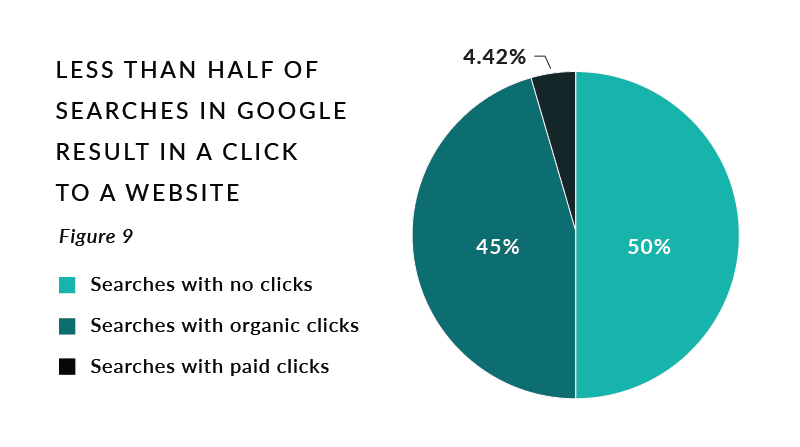Executive Summary
With millions in ‘lockdown’ to weather the COVID-19 pandemic, people are glued to the internet, searching for information related to the current crisis. In fact, coronavirus might be the biggest trend in Google search history. Considering search has historically been a key source for pharma brands to engage with their audiences, it has never been more important to ensure pharma marketers address the needs of patients and healthcare providers (HCPs). This POV will address how this pandemic may affect your business and what pharma marketers can do to stay top of mind, while also providing the help searchers need in this uncertain time.
SEO Provides Insights Into Shifting Behaviors for Patients and HCPs
Search terms like “google,” “facebook,” and “amazon” historically took the top spot in consumer searches. Since the end of February 2020, the word “coronavirus” has become the focus of consumers around the world, more than tripling the previously most-researched topics. Furthermore, spikes in searches around “loss of smell” and “loss of taste” have a strong correlation with COVID-19-diagnosed cases.

This kind of data proves to be another useful tool in the hands of sophisticated data scientists during this pandemic. Figure 2 shows a significant increase in symptoms-related searches in New York State, even before media coverage of these symptoms began.

Pharma marketers can leverage search patterns, too, including understanding the specific concerns of patients using their products during the pandemic.
Insights based on SEO trends have become one of the most effective tools to quantify audience interests and needs at scale, which is particularly important in healthcare. Figure 3 shows three medications searched for over a two-month period; this may indicate that searchers were looking for information about their treatment and how COVID-19 could impact them.
Pharmaceutical brands can leverage this type of information to make data-informed decisions about relevant content on their web properties, including content related to COVID-19.

Make Content Decisions Based on Searcher Needs
Looking deeper into the search-term combinations can provide a nuanced picture of patients’ concerns and needs. Furthermore, search patterns can quantify the level of interest around topics a brand may consider adding to various marketing channels.
For example, Figure 4, below, shows the ability for a brand to understand what symptoms patients are concerned with as they spiked with the spread of the pandemic.

Position Brands to Address New Patient Opportunities Through SEO Market Research
As patients began to face restrictions caused by the pandemic, searches for digital health solutions increased dramatically. After adapting to the “new normal,” searches began to decrease:

New opportunities emerging based on search data include:
- Consumers: Searches for “telehealth cost” and “telehealth insurance” have increased by more than 500% since the end of February.
- HCPs: Searches for “telehealth zoom,” “telehealth cpt codes 2020,” and “telehealth training” are likely some of the most popular being made by HCPs.
Some ideas for addressing these new opportunities:
- Reevaluate existing physician locators and discussion guides to include connections to and content about telemedicine.
- Explore ways to make patient education and support programs more available to HCPs while fielding telemedicine appointments.
- Rethink your customer journeys — look for integration points with telemedicine where you can insert education or provide assistance from support programs or nurse ambassadors.
Understand Your Audience: Use Their Language
Search engines provide valuable insight into how your customers refer to certain conditions or symptoms. It is always important to speak the language of the customer; if you are not using the same terminology, your content may not be found. For example, does the general public refer to it as “COVID-19” or “coronavirus? (Figure 6)”

Takeaway: Just as you would with any search term, use the language searchers use to make sure your content is easily discoverable and resonates with the end user.
Help Patients Find Credible Information in a Sea of Uncertainty
The internet is a vast place, full of useful information and misinformation. Now, during the COVID-19 pandemic, consumers are looking for credible sources of information more than ever, as shown in Figure 7.
Search engine algorithms assign trust ratings to different sites that, as a result, drive your content visibility in search results. Though highly regulated pharmaceutical companies can inherently act as very credible sources of information, short-term tactics such as onsite markup (see laptop screen at right) and Google-recommended code updates are important. In addition, pharma should pursue long-term strategies like link building and reputation management.

Signal to Searchers and Google That the Brand Info Is Up to Date
Another important relevancy indicator for search engines is how up-to-date the information is. Google gives direct feedback to a searcher about when this information has been updated (Figure 8).


This provides an important feedback loop to the end user that reinforces searcher expectations around the accuracy of constantly changing information about the pandemic. There are SEO techniques that help provide these signals to Google and seachers shown in the example below.

Be There for Patients: Not Every Search Leads to a Click
The pandemic has expanded an existing Google trend to answer questions within search results, reducing the need for searchers to click through to websites.
Search results for “Coronavirus symptoms” give searchers answers in-line (Figure 9). This contributes to a growing trend of “zero-click searches.”


Brands should identify opportunities to connect with audiences within search results, even if it means not receiving the click.
Your SEO partner can help add new Google-recommended backend code to connect with patients within search results that may look like this:

This approach not only helps patients and HCPs to get the answers quickly, but brands will have an opportunity to build relationships and remove barriers as their audiences move through their respective journeys.
Conclusion
After COVID-19, we will find ourselves in a new normal. For marketers, the importance of using search for insight mining and content optimization will increase. As millions of people continue to isolate themselves, search-behavior data reinforces our understanding of how patients are adapting to a new life online and can provide strong insights into emerging trends. Techniques deployed during the pandemic will be valuable in a post-COVID-19 world, too. Pharma marketers should use every tool at their disposal to help their audiences through this crisis. With the help of a strong SEO partner, pharma marketers can not only address needs, but also build stronger relationships with HCPs and patients.
Sources
Figure 1. THE SEARCH TERM “CORONAVIRUS” SKYROCKETED. Google Trends comparing search terms “coronavirus,” “google,” “amazon,” “facebook.”
Figure 2. SPECIFIC SYMPTOM SEARCHES CORRELATE TO THE GROWTH IN COVID-19 CASES. Search Trends and The Coronavirus Outbreak: Causation or Correlation
Figure 3. CORONAVIRUS & PHARMACEUTICAL BRANDS. Google Trends searches for pharmaceutical brands and coronavirus
Figure 4. COVID-19 SYMPTOMS CONCERNING PATIENTS. Google Trends comparing search terms “fever,” “sore throat,” “shortness of breath,” “loss of taste,” “loss of smell.”
Figure 5. PATIENTS ARE ADAPTING TO TELEHEALTH. Google Trends comparing search terms “telehealth,” “telemedicine,” “online doctor.”
Figure 6. COVID-19 VS. CORONAVIRUS SEARCH VOLUME. Google Trends comparing search terms “COVID-19,” “coronavirus.”
Figure 7. SEARCHES REFLECT A SEA OF UNCERTAINTY. Google Trends comparing search terms “fake news coronavirus,” “true coronavirus news,” “coronavirus rumors,” “coronavirus lies.”
Figure 8. SEARCHERS WANT UP-TO-DATE INFORMATION. Google Trends comparing search terms “latest coronavirus,” “coronavirus news,”
“coronavirus update.”
Figure 9. LESS THAN HALF OF SEARCHES IN GOOGLE RESULT IN A CLICK TO A WEBSITE. Less than Half of Google Searches Now Result in a Click
©Intouch Group 2020 Authors: Frank Young, Associate Director, SEO; David Cook, Associate Director, SEO; Daine Dvorak, SEO Specialist; Garima Jindal, SEO Specialist

